
“i am sending two photos, both of me, one of me in a bathing costume in our back yard, uncle arthur took that, while the other is of me with some fairies up the back, elsie took that one.” –frances griffiths, age 11
[caption id="TheAdventureoftheCottingleyFairies_Feature" align="aligncenter" width="1024"]
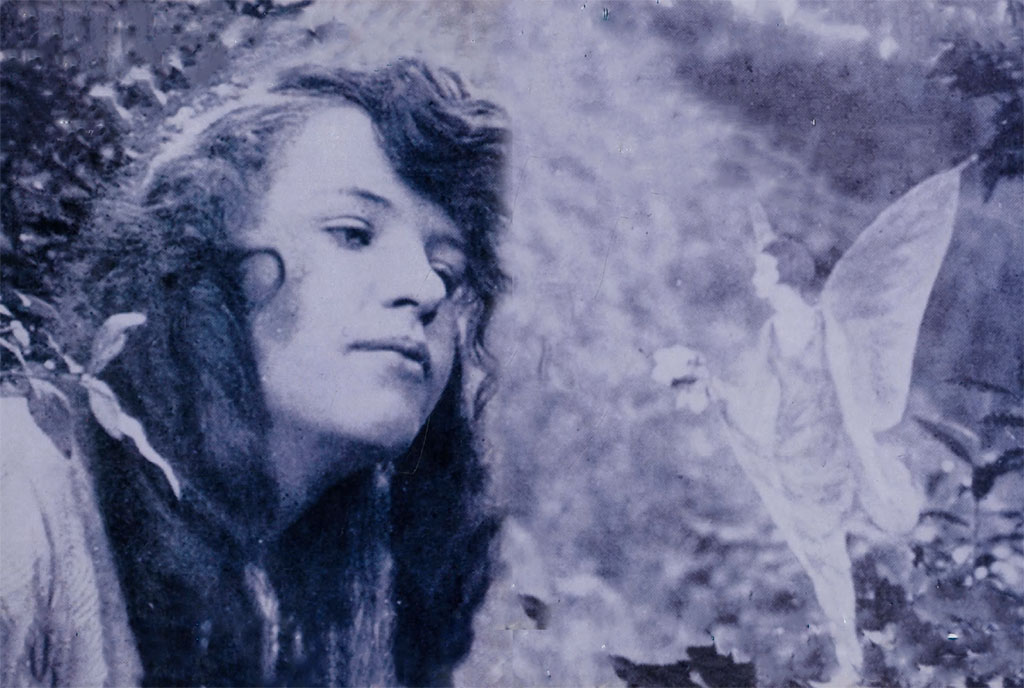
[caption id="TheAdventureoftheCottingleyFairies_img1" align="aligncenter" width="847"]
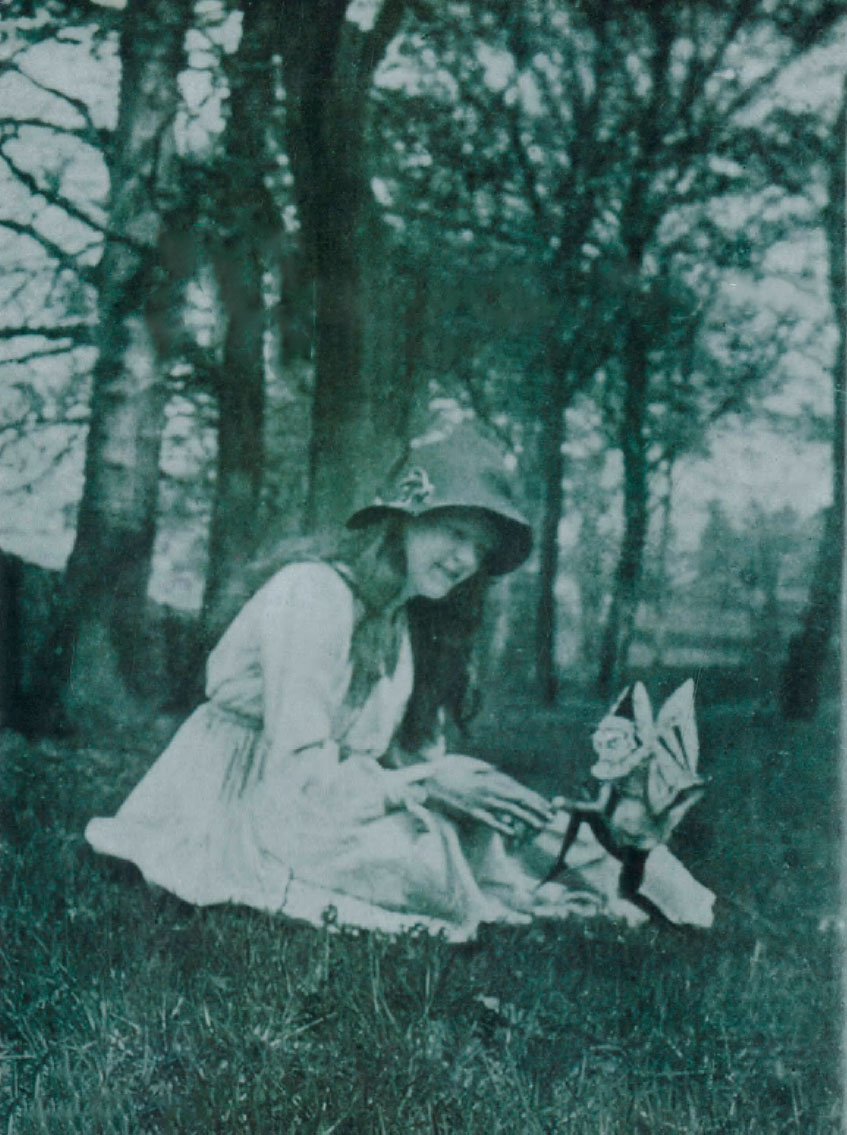
make no mistake about it, Frances Griffiths and her cousin Elsie Wright liked fairies.
[caption id="TheAdventureoftheCottingleyFairies_img2" align="aligncenter" width="226"]
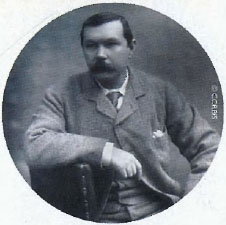
[caption id="TheAdventureoftheCottingleyFairies_img3" align="aligncenter" width="241"]
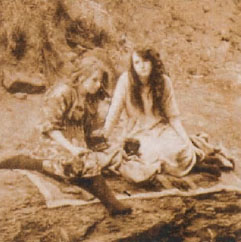
[caption id="TheAdventureoftheCottingleyFairies_img4" align="aligncenter" width="189"]

In fact, they really liked fairies. What’s more, they had photographic evidence that fairies liked them. It all might sound like a typical childish fantasy. Remarkably, though, one of the most respected men in England—Sir Arthur Conan Doyle, the creator of Sherlock Holmes—believed that the girls could literally see and photograph fairies that frolicked in their back yard. And so did many others.
Frances and Elsie often played in the Wrights’ garden in Cottingley, West Yorkshire. And quite often, Frances would wander back into the house soaking wet after falling into the brook that ran through the property. Annoyed by the girl’s frequent mishaps, her mother asked what it was about the brook that she found so irresistible. Frances matter-of-factly replied that she went there to see the fairies. Her older cousin vouched for her story, saying that she too had seen fairies down by the brook.
The explanation understandably peeved the grown-ups, but Frances and Elsie insisted they really could see fairies. Determined to prove their parents’sneers were unjust, the girls begged to borrow a camera. The upshot of this exchange soon had all of England either gaping in amazement or shaking their heads in disbelief.
The cause of the excitement was the photograph Frances described in her letter to a friend in South Africa (see previous spread). The image, now famous—or at least infamous—shows a somewhat bemused Frances looking toward the camera while a troupe of pint-sized fairies prances about on the earthen bank in front of her. The girls later produced a second photograph, this one purportedly showing Elsie entertaining a gnome (although some might reasonably argue that the gnome was entertaining Elsie). After that, her father, Arthur Wright, stopped lending the girls his camera. He, at least, seemed to have no doubt that the girls had faked the photographs, and he probably thought it best not to encourage them. Still, as little real harm seemed likely to come from the girls’ deception, he gave the matter little further attention, and it was soon nearly forgotten.
In the summer of 1919, though, Arthur’s wife, Polly, pursuing an interest in the occult and the supernatural, attended a lecture hosted by the local Theosophical Society, where she mentioned the pictures Frances and Elsie had taken—probably much to the regret of her husband and the girls, who found themselves at the centre of a very public sensation they could not have anticipated.
AMONG THE PEOPLE TO TAKE A SPECIAL notice of the “fairy-graphs” was Conan Doyle, whom Strand magazine had recently commissioned to write a story about fairies for its December 1920 issue. Conan Doyle, while best known for his Sherlock Holmes stories, was also famous as a spiritualist and believed, for example, that the great illusionist, Harry Houdini, was no mere trickster but possessed genuine supernatural powers. If Conan Doyle’s faith could withstand Houdini’s firm insistence that his stage performances involved nothing more mystical than sleight-of-hand, it is perhaps not surprising that it would positively flourish under the extraordinary claims of two seemingly guileless young girls.
“FOR A TRUE EXPLANATION OF THESE FAIRY PHOTOGRAPHS WHAT IS WANTED IS NOT A KNOWLEDGE OF OCCULT PHENOMENA BUT A KNOWLEDGE OF CHILDREN.”
CONAN DOYLE WAS NOT fool-hardy, however. Realizing that extraordinary claims demanded extraordinary proof, he asked Edward Gardiner, another leading spiritualist, to personally visit Cottingley and the Wrights. Gardiner found Frances and Elsie honest and sincere. He left them with two cameras and some photographic plates that had been secretly marked, just in case the girls’ honesty did not live up to his first impressions. He asked the girls to see if they could get some new photos in order to convince those who questioned the authenticity of the earlier two. “That would indeed silence the doubters,” Conan Doyle himself wrote to Arthur Wright. It is likely that Conan Doyle, though predisposed to accept the girls’ word, was at this point still one of the doubters himself and was using this ploy as a means of testing the girls before he risked his own reputation by endorsing their photographs in his Strand article. If so, the test was far too easy. The two girls quickly produced three more photographs, and the new images delighted Gardiner and Conan Doyle.
The Strand article appeared in late November, titled “Fairies Photographed: An Epoch-Making Event.” The public reaction was mixed. Some seemed no less pleased by the thought that an epoch-making discovery had been made by youngsters than by the extraordinary nature of the photos themselves. A more insightful commentator had a different interpretation: “For a true explanation of these fairy photographs what is wanted is not a knowledge of occult phenomena but a knowledge of children.”
Nowadays when photographic fakery is a refined art, it seems incredible that anyone could have been taken in even for a moment by fairy-folk that look for all the world like paper cut-outs. The true nature of the photos was so obvious to Arthur Wright that he spent quite a bit of time searching his house for the scraps of paper that would prove the hoax. He failed to locate the telltale evidence, but still the deception seemed so obvious to him that he lost all respect for Conan Doyle, a man whom he had once idolized.
BY GEORGE!
To learn about one of Sir Arthur Conan Doyle’s more astute investigations, visit British History Online at BritishHeritage.com and read “The Case of George Edalji.”
To some extent, the degree to which the pictures were accepted as genuine is accounted for by the fact that the original images were far less obviously faked than the versions we see today, reproduced from enhanced copies that were made to bring out greater detail. Nevertheless, these enhanced prints were made as early as 1920 at Gardiner’s own suggestion, and they were readily available almost from the moment the publicity over the photos began.
[caption id="TheAdventureoftheCottingleyFairies_img5" align="aligncenter" width="1024"]
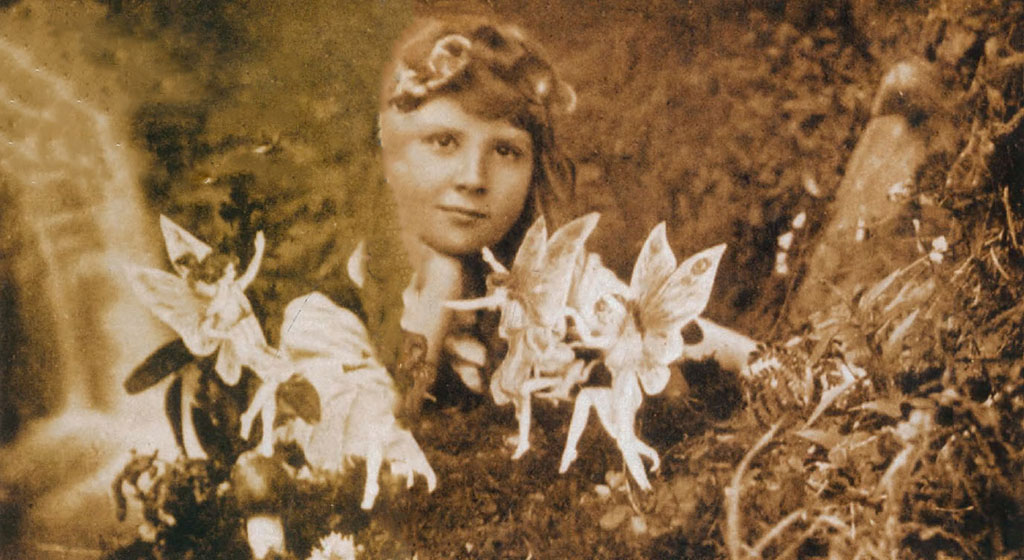
FRANCES AND ELSIE STUCK TO THEIR story until as late as the 1980s, when they finally admitted that four of the five famous photographs, at least, were fakes. In regard to the most famous of the pictures, Frances told author Joe Cooper, “My heart always sinks when I look at it. When I think of how it’s gone all round the world—I don’t see how people could believe they’re real fairies. I could see the backs of them and the hatpins [used to hold the paper figures up] when the photo was being taken.”
The hoax began as a simple prank aimed at the grown-ups who had scolded Frances for claiming to have seen fairies, but who themselves perpetuated myths about Santa Claus. Once the pictures had begun to generate publicity, the girls found it impossible to recant without embarrassing the entire family. Interestingly, neither Frances nor Elsie ever admitted that the fairies they claimed to have seen were imaginary, only that they had faked the photos. And Frances insisted to her dying day that the last one was genuine.
If the two young girls were trapped by their own deception, so too were many “experts” who accepted their claims as genuine. Loathe to admit they were taken in, some never conceded that the Cottingley fairies, not to mention the gnome, were anything but real.





Comments